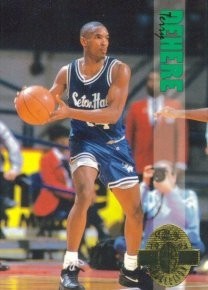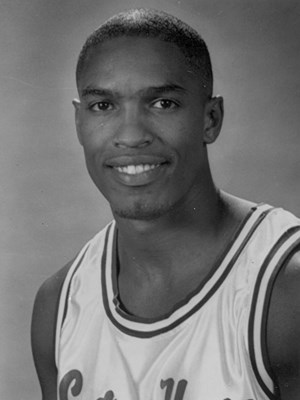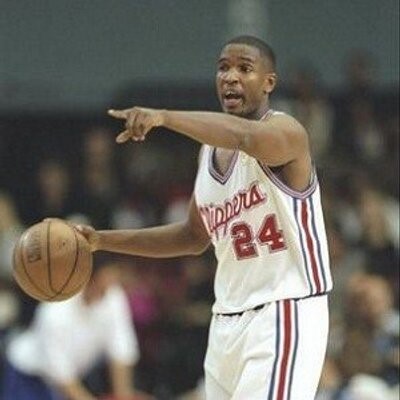Seton Hall
Pirates in the Pros: Terry Dehere
Date: August 24, 2021By: Ryan Johnston

Hudson Reporter
Terry Dehere walked on Seton Hall’s campus in 1989, staying a full four years before leaving in 1993. He left campus as Seton Hall’s greatest scorer ever and probably the greatest player to ever wear a Pirates basketball jersey. Let’s take one more look back and see how this legend made his way through South Orange, N.J. and eventually the pros.

YourSports
Dehere came into the Hall ready to go, lighting it up with 16 points-per-night, adding in three rebounds and two assists. He shot just 40% from the field but made his mark from behind the arc, shooting a superb 39% from three. He improved upon those numbers in his sophomore season, netting an efficient 20 points-per-game on 46% shooting from the field and 43% from deep. In that sophomore season, the Pirates had their best season in history, going 25-9, winning the Big East Tournament, and making it all the way to the Elite Eight in the NCAA Tournament.
Moving into junior year, Dehere took a small step back in terms of his numbers. Though he still averaged 19 points-per-game and upped his assists-per-game to three, he shot 43% from the field and just 32% from three. The Pirates had another successful season, going 23-9 and making the fighting their way to the Sweet 16 before being toppled by No. 1 Duke.

Seton Hall Athletics
Senior year was special for Dehere. He improved his scoring output to 22 points-per-contest, getting his shooting percentage back up to 46% and his three-point percentage back up to 40%. He also added in three rebounds and two assists. The Pirates again had a great season, finishing 25-9 and winning the Big East Championship, but struggled in March Madness, getting bounced in just the second round. Dehere earned a bid for second team All-America, Big East Player of the Year, and the Haggerty Award amongst a slew of others. He remains the school’s all-time leading scorer.

Seton Hall Athletics
Following his career with Seton Hall, Dehere was drafted by the Los Angeles Clippers 13th overall in the 1993 NBA Draft. He struggled to adjust in his rookie year, shooting a very poor 37% from the field. However, ever the floor spacer, he showed great potential with his three-ball, shooting 40% on limited attempts. Dehere finished up his rookie season averaging five points on twelve minutes-per-game in just 64 contests.
Dehere’s second season was a drastic improvement from his first. He increased his scoring to double digits, putting up a little more than 10 points-per-game. Despite his three-ball suffering in his expanded role, his shooting percentage went up to around 40%, even with a nagging sprained ankle. He also averaged two rebounds and three assists-per-game. The Clippers, however, were terrible. They lost their first 16 games of the season and finished just 17-65 on the year.
The 1995-96 season, Dehere’s third, was undoubtedly his best season in the league. He got his scoring up to a career high 12 points-per-night and was one of the most efficient shooters in the league. The man shot 46% from the field and an obscene 44% from deep, making him one of the league leaders in both effective and true shooting percentage. Dehere also became a more willing passer, dishing out a career-high four assists-per-game. The Clippers marginally improved but still struggled, winning just 27 games that season.

@Terry Dehere via Twitter
His fourth season in the league was a bit disappointing. He shot just 38% from the field and 32% from beyond the arc. His minutes decreased from 24-per-game the season prior to just 14. He only scored six points-per-game. Los Angeles improved to 36 wins that season, but this was Dehere’s last season with the Clippers.
He signed with the Sacramento Kings for the following season. He averaged six points-per-game again on 40% shooting with 38% from deep. The Kings went just 27-55 and waived him the following season. He signed a contract with the Vancouver Grizzlies the following season, which would be his final in the NBA. He finished his NBA career averaging eight points-per-game while maintaining 38% shooting from three.
Dehere now owns a restaurant in Jersey City, N.J. and is the chairman of an affordable housing non-profit charity. A legend of Seton Hall, Dehere went on to have a successful albeit inconsistent NBA career. He remains one of, if not the greatest Seton Hall basketball players of all time but has proven himself to be far more than just a basketball player.
Ryan Johnston can be reached at ryan.johnston@student.shu.edu.
Posted in: Sports, Men's Basketball, WSOU




